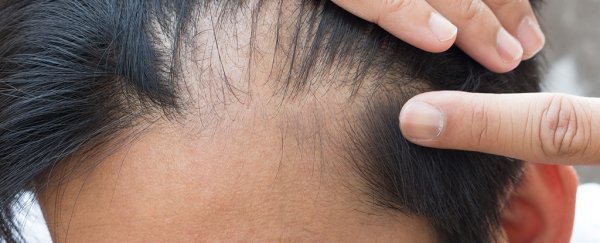For the first time, scientists have discovered that a common type of immune cell directly triggers stem cells in the skin that are responsible for hair growth in mice. Without this trigger, hair follicles just don't do their job - even if they have the stem cells necessary to proceed.
As the mechanisms for hair growth in mice are similar in humans, the researchers hope their newly uncovered mechanism could lead to a better understanding of conditions like alopecia, and other types of baldness.
Among the various immune system players we have in the body, there's a subclass of immune cells called regulatory T cells, or Tregs for short.
The vast majority of Tregs live in our lymph nodes, where they help to control inflammation throughout the body. But we also have subsets of Tregs that reside in other body parts, such as muscle or lung tissue.
And studies are starting to show that these 'tissue-resident' Tregs may be performing unique roles specific to the part of body they're in.
Researchers know that both mice and humans have a lot of Tregs in the skin, but so far we know very little about their function there.
Seeing that skin-specific Tregs tend to sit around hair follicles, a team led by researchers from the University of California San Francisco (UCSF) investigated the hypothesis that these immune cells were somehow involved in hair growth.
What they discovered is not just involvement, but a direct trigger - making Tregs a super-important part of the hair growth process.
"Our hair follicles are constantly recycling: when a hair falls out, a portion of the hair follicle has to grow back," senior researcher Michael Rosenblum said in a press statement.
"This has been thought to be an entirely stem cell-dependent process, but it turns out Tregs are essential."
In mammals, hair follicles regenerate in a specific pattern, cycling between growth phases (known as anagen) and rest phases (telogen).
The team tracked the amount of Tregs in the skin of mice during these different phases of hair growth, and found a tight correlation - in the telogen phase these immune cells were much more abundant.
What's more, highly active Tregs were crowding around hair follicles at three times the normal rate, right towards the end of the hair growth rest phase.
Intrigued by this correlation, the scientists took a step further to uncover the biological mechanism involved in the relationship between Tregs and the stem cells that make hair follicles do their job.
To do this, they took genetically modified mice whose Treg cells could be 'knocked out' with a simple intervention.
The researchers clipped the hair on the mice's backs and then applied a depilatory cream for 30 seconds - when you depilate the skin, hair follicles kick into the active hair growth phase.
They monitored the hair regrowth for 14 days, comparing the regrowth between control mice and the ones whose Tregs they had tampered with.
In mice whose Tregs were knocked out in the first three days after depilation, the hair just didn't grow back, leaving them with a bald patch on their backs.
A closer look revealed that Tregs directly trigger the activation of stem cells in the hair follicle through a well-known cell communication mechanism called the Notch signalling pathway, which involves a specific protein called Jag1.
They even found that when they replaced Tregs with microscopic beads covered in Jag1, it triggered the activity in the hair follicles just like Tregs would.
"It's as if the skin stem cells and Tregs have co-evolved, so that the Tregs not only guard the stem cells against inflammation but also take part in their regenerative work," Rosenblum said.
"Now the stem cells rely on the Tregs completely to know when it's time to start regenerating."
It's a really elegant demonstration of a previously unknown mechanism for hair growth in mice, but there's a lot more work to be done before we can tell whether defective skin Tregs could be the culprits behind hair loss in humans.
But there's at least one tantalising clue that the study is onto something here. In genome-wide association studies of alopecia areata, a condition characterised by 'patchy' hair loss, researchers have found mutations on genes that are involved in Treg function.
Next up, the researchers are hoping to expand their results and investigate how Tregs in the skin could be involved in wound healing, and also various hair loss conditions in humans.
"It will be important to determine whether this principle extends to human diseases of epithelial dysfunction and whether Tregs can be exploited to develop new therapies for stem-cell-mediated tissue regenerative disorders," they write in the study.
These new results are also an exciting addition to the growing body of knowledge scientists have about hair growth. Earlier this month, researchers reported the discovery of a protein that causes skin stem cells to develop into hair cells in mice. They are now investigating whether this protein is involved in hair loss in people.
The research has been published in Cell.
